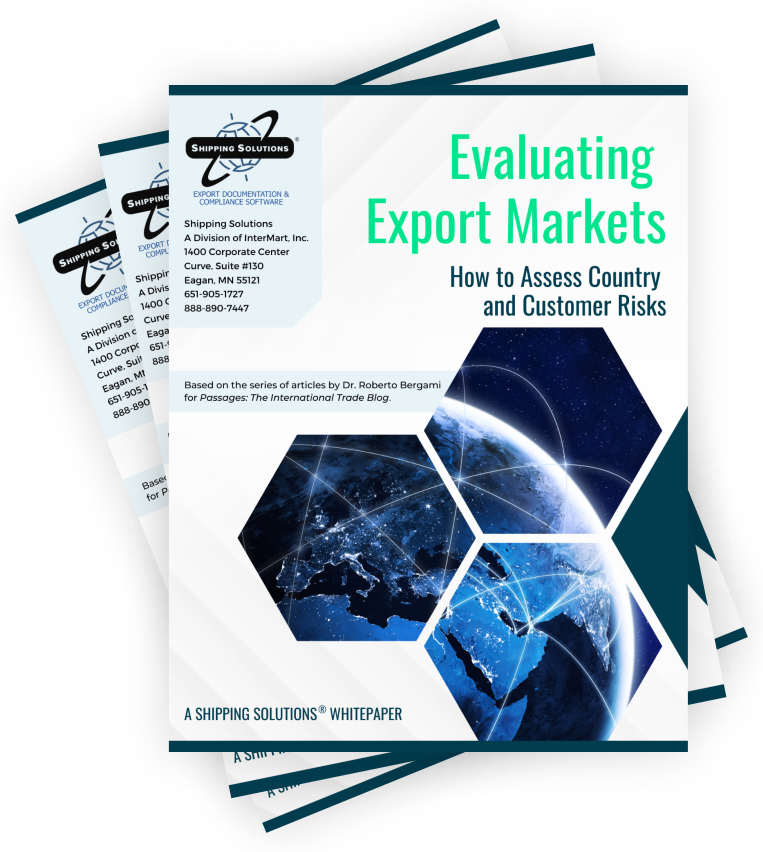The International Trade Blog International Sales & Marketing
Export Basics: How to Prepare for an International Trade Show
On: August 22, 2016 | By:  Francis Peters |
4 min. read
Francis Peters |
4 min. read
 Small and midsize U.S. businesses looking to expand into new markets should not overlook international partnering opportunities. By signing up a distributor or dealer overseas, your product or service can have a global reach. International trade shows provide broad access to potential customers and partners.
Small and midsize U.S. businesses looking to expand into new markets should not overlook international partnering opportunities. By signing up a distributor or dealer overseas, your product or service can have a global reach. International trade shows provide broad access to potential customers and partners.
You don't need to be exhibiting to benefit from a trade show (or trade fair as they are commonly called overseas). By simply registering as a visitor, you have the opportunity to walk the exhibition floor and make valuable contacts, see how competitors overseas stack up, and discover new ways to market or position your product. And when your company decides to have its own booth at an international trade show, you'll know more of what to expect.
I've attended, exhibited and spoken at trade shows in various countries on several continents. Most trade shows are similar: spacious halls, vast crowds, and numerous exhibitors. But attending an overseas trade show does add a new element since you may need to adapt your communication style as well as your marketing message.
Here are a few steps you can take to prepare for your trade show.
1. What language do you speak?
If you're multi-lingual, you have a leg up. If English is your only language, you still have the advantage of speaking the primary language of international business. In working with distributors worldwide, I found there is often at least one person in an office who speaks English, maybe not fluently, but at a level so that we can communicate effectively. The main obstacle is often my use of English: I had to remember to speak clearly and avoid such American colloquialisms as, "Let's get the ball rolling."
2. What information is on your business card?
You may know that Plymouth, Minn. is in Minnesota, but the shipping clerk at your new business prospect in Asia may not. As a result, a much needed package may be sent to another state or even another country (Plymouth, UK, perhaps) by mistake. To avoid confusion, simply write out Plymouth, Minnesota USA.
3. How do you interact?
Since trade shows typically draw visitors from a large number of countries in a region, there is no single answer. The best advice is to observe and adapt. Do introductions start with a formal exchange of business cards, as is common in East Asia? If other attendees are in business suits and you're dressed casually, what impression do you create? Do you immediately use a person's first name upon meeting even though others address each other by last names or titles?
To help prepare for cultural differences, brush up using common references. The Culture Shock book series, for example, covers cultural issues for many countries, and CultureGrams—concise, four-page reports on a country's history, customs and lifestyle—can both be invaluable. And best of all, your local library may have copies.
4. Do you need to adapt your marketing materials?
Are you going to translate your brochures, product data sheets, and presentation slides? Will you localize them for cultural differences, such as writing euros instead of dollars in a French-language version for Belgium?
It may not make sense to have your marketing materials localized if you don't have a distributor in place yet. For a regional show, you could have a short description of your company translated into multiple languages printed on one sheet. You could then hand out this document with your other English-language marketing material. Also, if your product or service is complex, using charts or diagrams may simplify details. As the saying goes, a picture is worth a thousand words.
5. Are you prepared?
As with any show, preparation is critical. You may have a list of overseas contacts you would like to meet in person. Schedule a meeting, especially if they will be attending only part of the event. Likewise, book hotel lodgings as far in advance as possible. Do you have a valid passport? Do you need a Carnet or customs document so that you can bring in demonstration products tax-free?
Your local U.S. Commercial Service office, which is part of a global network of trade specialists, is often the best starting point. To find out more, visit Trade.gov and look for the nearest U.S. Export Assistance Center in your state.
6. When you're ready to exhibit
The U.S. Commercial Service's Trade Fair Certification program, a cooperative arrangement with private-sector trade show organizer, can be a great resource for small businesses ready to exhibit at trade shows overseas. For trade shows that become certified, participating U.S. exhibitors benefit from expanded services such as oversight and coordination of event services, promotional support, exhibitor marketing facilitation, and show site assistance.
Often there is a U.S.A. Pavilion where U.S. companies are co-located in one section of the trade show space highlighted with signage. This can be very beneficial since often foreign buyers looking for quality products with strong support specifically seek out U.S. products to carry. To learn more about what upcoming trade shows are being certified, visit the ITA Trade Events page.
Attending trade shows overseas can be an effective way to meet in person with potential distributors, see your competition, and learn of new marketing opportunities for your product. Take advantage of these opportunities and plan ahead.
About the U.S. Commercial Service
As the trade promotion unit of the U.S. Department of Commerce's International Trade Administration, the U.S. Commercial Service connects U.S. businesses with international buyers through a network of offices in 108 U.S. cities and U.S. Embassies and Consulates in over 70 countries. Services include export counseling, market research, business matchmaking, participation in trade events, international partner searches, advocacy, and more. For more information visit www.export.gov.
This article was first published in January 2013 and has been updated to include current information, links and formatting.

About the Author: Francis Peters
Francis “Chip” Peters is the Senior Commercial Officer for the U.S. Commercial Service at the U.S. Embassy in Kuala Lumpur, Malaysia. Prior to that, he has served in various positions and posts in the United States and around the world for the U.S. Commercial Service.
For 15 years, Chip worked in the private sector, including positions in the telecom and computer industry. He held positions in global marketing, international sales, and product management with Fortune 500 companies AT&T and Dell in the U.S. and Malaysia, as well as with high-tech startups in Austin, Texas and Thailand. For four years, Chip also ran his own consulting business, delivering strategic marketing and communication solutions for client firms. He has lived and worked Asia for more than ten years.
In addition to his business experience, Chip taught international trade and finance for four years as an adjunct professor at St. Edward’s University in Austin and served two years as a U.S. Peace Corps volunteer in Mali, West Africa. Chip holds a B.A. from Union College, an M.A. from Columbia University, and an M.B.A. from Chulalongkorn University.

